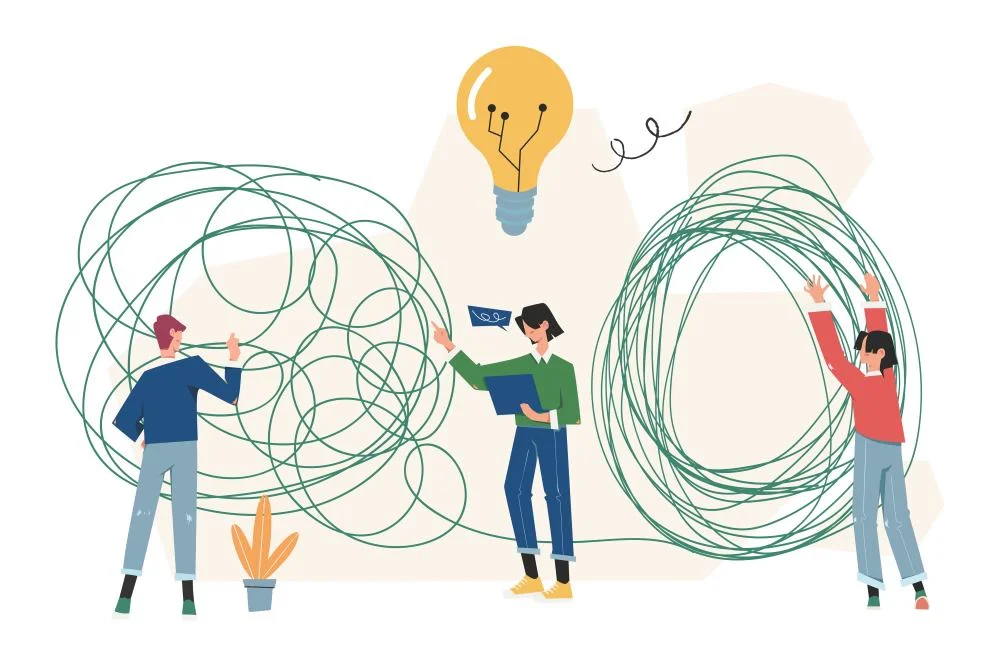As the future of work changes, the need for effective problem solvers is increasingly important. Automation and robotics are taking over more tasks, monitoring quality and increasing efficiency. Yet when problems do arise, people who can quickly make sense of complex problems offer highly valued skills.
Problem solving isn’t as simple as it might seem. Solving a problem accurately, efficiently and permanently demands understanding the type of problem that you face. The diversity of problem types is matched by the wide range of problem-solving methods and tools, so it can be difficult to know where to start. The key is recognizing what kind of problem you are facing and then picking the right tool for the job.
KT’s definition of a problem is: A situation where expectations are not being met; we don’t know how to close the gap, and we need to know how to in order to take corrective action.
At Kepner-Tregoe, we divide the kinds of problems into four main categories:
1. A Deviation Problem occurs when something is not performing as it has in the past. There has been some deviation in performance and we need to know the cause to resolve it. This can relate to the performance of a thing, like a machine, an IT system, or a person.
2. An Efficiency Problem is when you need to save resources, time, or money by improving the efficiency of a thing, a process, or person.
3. A Variation Problem occurs when the performance of a process (manufacturing, human, electronic) shifts unexpectedly outside acceptable limits.
4. An Innovation Problem is when you need to find a solution to something that is more than just an incremental change; it is breakthrough development that meets the end users’ needs and more.
Test your ability to recognize the type of problem that has occurred. Understanding problems is the first step to solving them. Answers are available at the end of this blog.
Question One
Think about this scenario: Your company is supposed to process medical claims in one to three weeks but often takes longer. When a subscriber’s simple claim hadn’t gone through after two months, the claims manager explodes. Your company finally decides to find out why claims are rarely processed within the anticipated timeframe.
What type of problem is this?
1. Deviation Problem
2. Variation Problem
3. Innovation Problem
4. Efficiency Problem
Question Two
Think about this scenario: Your company makes high-quality scales used in doctors’ offices for weighing patients. In recent years, a growing number of complaints have come in about the accuracy of reported weights for the heaviest patients. You need to resolve why the scales are failing at the highest weights.
What type of problem is this?
1. Deviation Problem
2. Variation Problem
3. Innovation Problem
4. Efficiency Problem
Question Three
Think about this scenario: You are responsible for quality control at an auto interior supplier. A bubble in a vinyl surface occasionally appears in a specific section of bonded vinyl fabric. You need to resolve this defect and find out if there is a problem with the vinyl fabric supplied by a subcontractor or if something is going wrong during manufacturing.
What type of problem is this?
1. Deviation Problem
2. Variation Problem
3. Innovation Problem
4. Efficiency Problem
Question Four
Think about this scenario: Your company has produced unique greeting cards for many years, but sales are no longer growing. With more people relying on email, texts and video chats, you need to find a unique way to offer your distinctive greeting card messaging online and still make a profit.
What type of problem is this?
1. Deviation Problem
2. Variation Problem
3. Innovation Problem
4. Efficiency Problem
Understanding what type of problem you face is key to establishing an effective response. Deviation, Variation, and Efficiency are often tackled using more traditional or analytic problem-solving approaches. The tools available in this space are numerous and varied. Six Sigma, Lean, Fishbone, Five Whys, 8D, and KT Problem Analysis are among the many in use. Innovation Problems use more creative problem-solving approaches, such as Design Thinking. Different methods and tools work better with different types of problems. Understanding the nature of a problem is the first step in solving it.
So, how did you score?
Answers
1. The claim scenario is an Efficiency Problem.
2. The scale scenario is a Variation Problem.
3. The auto interior issue is a Deviation Problem.
4. The greeting card issue is an Innovation Problem.









